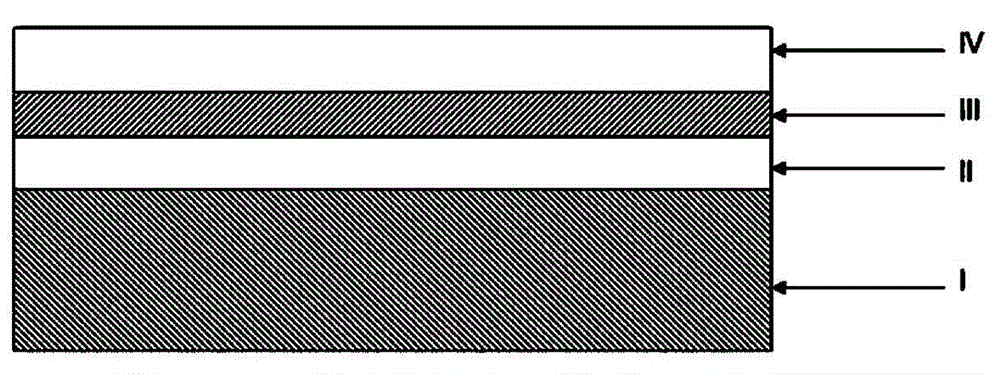Color self-cleaning glass
A self-cleaning, glass technology, applied in the field of glass, can solve the problems of insufficient energy saving and environmental protection in the construction field, decreased transparency, and reduced photoelectric conversion efficiency of components, and achieves improved photoelectric conversion efficiency, reduced reflectivity, and safe and environmentally friendly production process. Effect
- Summary
- Abstract
- Description
- Claims
- Application Information
AI Technical Summary
Problems solved by technology
Method used
Image
Examples
Embodiment Construction
[0009] The accompanying drawing is the glass structure layer of the present invention. Wherein, I is the dielectric layer 1, II is the dielectric layer 2, and III is the base layer. 3 mm thick float ultra-clear glass is used as the base layer, after cleaning and drying, it is ready for use; after the magnetron sputtering process is used, after the vacuum meets the requirements, the indium tin target is used, and the high-purity argon gas is evenly introduced in sequence. Argon-oxygen mixed gas, by adjusting the power and gas concentration, the dielectric layer 1 (material is indium tin oxide, thickness 10~400nm) is prepared; through the sol-gel process, fluorine doped with Eu(TTA)3Phen is used to replace Polymethacrylate isopropanol solution, continue to coat dielectric layer 2 on the outside of dielectric layer 1 (the material is europium-doped fluorine substituted polymethacrylate, thickness 100~10nm); through low-temperature magnetron sputtering process, vacuumize Afte...
PUM
 Login to View More
Login to View More Abstract
Description
Claims
Application Information
 Login to View More
Login to View More - R&D
- Intellectual Property
- Life Sciences
- Materials
- Tech Scout
- Unparalleled Data Quality
- Higher Quality Content
- 60% Fewer Hallucinations
Browse by: Latest US Patents, China's latest patents, Technical Efficacy Thesaurus, Application Domain, Technology Topic, Popular Technical Reports.
© 2025 PatSnap. All rights reserved.Legal|Privacy policy|Modern Slavery Act Transparency Statement|Sitemap|About US| Contact US: help@patsnap.com

